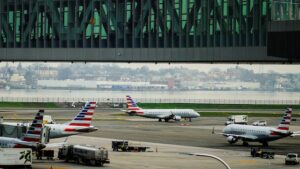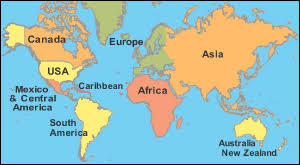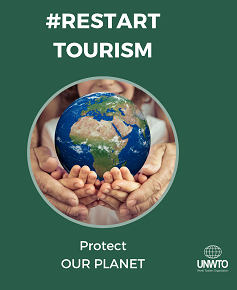Nepal-China joint statement on cooperation

Kathmandu, January 14: Chinese Premier Wen Jiabao travelled to Nepal on Saturday for a brief half-day stopover aimed at boosting economic ties, one month after his visit to Kathmandu was postponed at the last minute amid security concerns.
Chinese Premier Wen Jiabao during his 5-hour visit signed eight agreements on Saturday, including economic and technical assistance agreement, committing Nepal among other things, a grant assistance of 750 million Yuan (Rs 9.75 billion) for the next three years.
Under the agreements, China agreed to provide annual grant assistance of 200 million yuan (about Rs 2.60 billion) to Nepal, raising the assistance volume by a third over what it was providing so far. China also pledged special grant assistance of US$ 20 million (over Rs 1.65 billion) to the government to support the peace process.
The two countries agreed to develop international-standard dry ports and cargo terminals in Yari-Pulam, Rasuwa-Jilong and Kodari (Tatopani)-Zangmu (Khasha) customs. Dry ports at Kimanthanka-Dingri, Olangchungola-Riwu and Mustang-Ligzi will be of bilateral standard.China assured cooperation in the construction of Pokhara International Airport.
The Chinese Foreign Ministry said in a statement Mr. Wen’s official visit was at the invitation of Nepal Prime Minister Baburam Bhattarai. He would spend half a day in the capital en route to West Asia, where the Chinese Premier, the first to visit the region in 20 years, will spend four days.
Wen’s entourage includes Chinese Foreign Minister Yang Jiechi, Minister of the National Development and Reform Commission Zhang Ping, Commerce Minister Chen Deming, Director of the Research Office of the State Council Xie Fuzhan, Vice Secretary-General of the State Council and Director-General of the Administration for the Affairs of State Council Organs Jiao Huancheng, Vice Secretary-General of the State Council and Director of the Premier’s Office Xiang Zhaolun and Vice Foreign Minister Zhai Jun.
After his stay in Nepal, Wen will also pay official visits to Saudi Arabia, the United Arab Emirates (UAE) and Qatar, at the invitation of King and Prime Minister of Saudi Arabia Abdullah bin Abdul-Aziz, UAE Vice President and Prime Minister Sheikh Mohammed bin Rashid Al-Maktoum, and Qatari Prime Minister and Minister of Foreign Affairs Sheikh Hamad bin Jasim bin Jabir al-Thani. Wen will also attend the Fifth World Future Energy Summit in Abu Dhabi.
Premier Zhu Rongji was the last Chinese leader to visit Nepal in 2001.
JOINT STATEMENT BETWEEN NEPAL AND THE PEOPLE’S REPUBLIC OF CHINA
At the invitation of Prime Minister Dr. Baburam Bhattarai of Nepal, Premier Wen Jiabao of the State Council of the People’s Republic of China paid an official visit to Nepal on 14 January, 2012.
During the visit, Premier Wen Jiabao called on Rt. Honorouble President Dr. Ram Baran Yadav and held talks with Prime Minister Dr. Bhattarai. In a friendly and sincere atmosphere, the leaders of the two countries had an in-depth exchange of views and reached broad understanding on Nepal-China relations as well as on international and regional issues of mutual interest.
Premier Wen Jiabao also met with the senior leaders of major political parties of Nepal and wished for the logical conclusion of peace process and drafting of a new Constitution in the near future.
1. The two sides reviewed the time-tested Nepal-China friendly relations and noted with satisfaction that since the establishment of diplomatic relations in 1955, China-Nepal relations have been growing in a consistent, steady and healthy manner. The relationship is characterized by equality, harmonious coexistence, ever-lasting friendship and comprehensive cooperation.
The two sides maintained that China-Nepal relationship is of vital significance to both countries. Deepening bilateral friendship and cooperation serve the fundamental interests of the two countries and the two peoples, and are conducive to peace, stability and development in the region and the world at large. The two sides decided to further promote Nepal-China friendly relations of Comprehensive Partnership of Cooperation Featuring Ever-lasting Friendship on the basis of the Five Principles of Peaceful Coexistence.
2. The two sides reiterated their commitment to respect each other’s independence, sovereignty, territorial integrity, choice of social system and development path chosen in light of their respective national conditions, and respect and understand each other’s major concerns and core interests. The two sides further reiterated that they adhere to the principles of the United Nations as enshrined in the Charter, five Principles of Peaceful Co-existence, non-alignment and non-intervention in each other’s internal affairs, and develop friendly exchanges and cooperation on the basis of equality and mutual benefit. Both sides agreed to share development experiences and technological advancement, and enhance all round cooperation so as to achieve mutual development and prosperity.
Both sides believed that high-level contacts are of special importance to the development of bilateral relations. The two sides agreed to maintain the momentum of high-level mutual visits, and have meetings between the leaders on the multilateral occasions. The two sides agreed to make full use of the existing mechanisms, including the diplomatic consultations and the Nepal-China Joint Economic and Trade Committee Meeting. The two sides also agreed to form a Consultation Mechanism at the level of Minister for Foreign Affairs.
3. The Nepalese side reiterated that there is only one China in the world, and the Government of the People’s Republic of China is the sole legal government representing the whole of China. Both Taiwan and Tibet are integral parts of the Chinese territory. The Nepalese side firmly supports the efforts made by the Chinese side to uphold state sovereignty, national unity and territorial integrity, and does not allow any forces to use Nepalese territory for any anti-China or separatist activities. The Chinese side highly appreciated the position of the Nepalese side.
The Chinese side reiterated its commitment to the policy of non-interference in the internal affairs, and expressed firm support to the efforts made by the Nepalese side in upholding its independence, sovereignty, territorial integrity, national unity and stability. As a close neighbor of Nepal, the Chinese side is pleased to see the progress achieved in the peace process in Nepal and sincerely hoped that Nepal will realize peace, stability and prosperity including the drafting of a new Constitution in the near future. The Nepalese side highly appreciated the goodwill shown by friendly neighbor China at this historic transition.
4. The two sides agreed to further intensify cooperation in socio-economic development, promotion of trade and tourism, hydropower, transportation infrastructure development and other fields on the basis of equality and mutual benefit.
The Nepalese side expressed sincere thanks to the Chinese side for the long-standing valuable assistance for Nepal’s socio-economic development, and stated that Nepal, in a period of transformation, looked forward to the continued support from the Chinese side. The Chinese side stated that the Chinese Government will continue to provide assistance within its ability for the economic and social development of Nepal. The Chinese side agreed to expedite the implementation of various development projects, including the upgrading and expansion of existing Ring Road of Kathmandu and Tatopani Dry Port.
At the request of the Nepalese side, the Chinese side assured of the increase in the volume of regular economic and technical assistance for the implementation of various infrastructure development and other projects. An Agreement on Economic and Technical Cooperation was signed between the Government of Nepal and the Government of the People’s Republic of China
The two sides agreed to enhance cooperation to ensure that the construction of the Upper Trisuli 3A Hydro Power project with the concessional loan of the Chinese Government will go on smoothly. The Nepalese side welcomed Chinese participation in the construction of Pokhara International Airport, and the Chinese side took a positive attitude to this.
The two sides congratulated the official opening of the second Nepal-China land route of Syaphrubesi-Rasuwa Gadhi Road. Both sides agreed to give full attention to the geographic proximity, and improve connectivity, particularly, the land transportation infrastructure between the two countries, to facilitate bilateral exchanges, cooperation and business ties. The two sides maintained that the Tibet Autonomous Region of China and Nepal should make full potentials and take their respective advantages to strengthen people to people exchanges in the border areas, and to promote trade, tourism, and the flow of goods and services to expand mutually beneficial cooperation.
The Chinese side stated that China encourages and supports competent and well-established Chinese companies and enterprises to promote investment and joint ventures in Nepal, and will provide financing assistance including loans of concessional nature, to mutually agreed projects. The Nepalese side stated that Nepal appreciated and welcomed the offer made by the Chinese side. During the visit, a Memorandum of Understanding on Operationalization of Loan Mechanism was also signed between the Ministry of Finance of the Government of Nepal and the Export-Import Bank of China. The two sides agreed to continue discussions regarding the bilateral Agreement on the Business Investment Promotion and Protection of Investment- BIPPA.
5. The two sides believed that strengthening border areas management and development serves the common interests of both countries. Both sides agreed to make joint efforts to build a boundary of peace, tranquility, friendship and cooperation. The two sides signed the Agreement on the Management of Ports in Nepal-China Border Areas and the Agreement on Trans-frontier Pasturing by Border Inhabitants.
The two sides applauded the cooperation between the Ministry of Public Security of China and the Ministry of Home Affairs of Nepal, and agreed to improve the meeting mechanism between law-enforcement authorities of the two countries, and to deepen cooperation on border management and law-enforcement capacity-building, so as to uphold peace and stability of China-Nepal border areas.
6. The two sides were pleased with the momentum of bilateral people to people and cultural exchanges and announced the year 2012 as “Nepal-China Year of Friendly Exchanges”. The two sides agreed to promote exchanges and cooperation in the areas of culture and education and between youths, media, think tanks, scholars and friendship groups of the two countries.
The two sides signed the Agreement on Cultural Cooperation, and agreed to enhance cultural exchanges and cooperation. Both sides believed that China Festival held regularly in Nepal by the Chinese side has promoted cultural exchanges between the two countries, and agreed to continue the Festival. Both sides also agreed on the mutual visits between their cultural and arts group.
Both sides noted with appreciation that since the establishment of the youth exchange mechanism in 2009, the youth delegations of the two countries have realized mutual visits. The two sides agreed to expand the scale of youth delegation from 30 to 50 under the youth exchange mechanism. The Chinese side will invite 100 Nepali youths to visit China in 2012. The Chinese side will continue to provide government scholarships to the Nepalese side and welcome students from Nepal to study in China through other programs and channels. The two sides also agreed to expand tourism cooperation and support each other’s promotional activities in their respective countries.
7. The two sides believed that Nepal and China have identical or similar positions on major international issues, such as global financial crisis, energy and food security, that concern the request and aspirations of the developing countries. The two sides agreed to maintain close coordination and cooperation in this regard so as to uphold the common interests of China, Nepal and other developing countries.
The two sides positively view and support each other’s participation in regional cooperation, and agreed to strengthen coordination and cooperation in various regional cooperation mechanisms.
8. The two sides believed that the official visit of Premier Wen Jiabao to Nepal took Nepal-China relations to a new height. It also served as a milestone in the annals of Nepal-China bilateral friendly relations and cooperation. The Chinese side expressed its appreciation to the Government and people of Nepal for their gracious hospitality.
Premier Wen Jiabao extended an invitation to Prime Minister Dr. Baburam Bhattarai to pay an official visit to China at a mutually convenient time. Prime Minister Dr. Baburam Bhattarai accepted the invitation with delight.
14 January 2012
Kathmandu, Nepal














